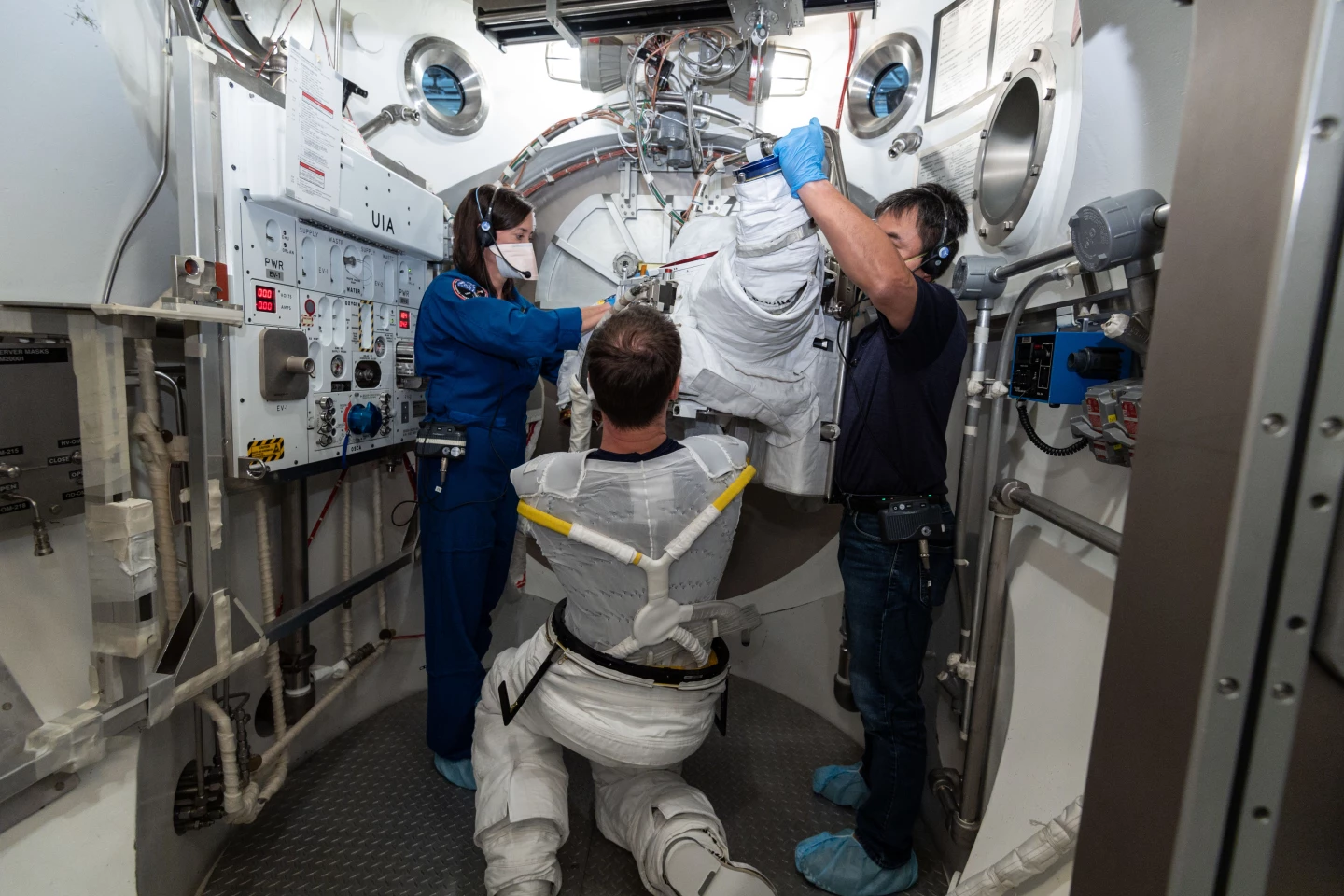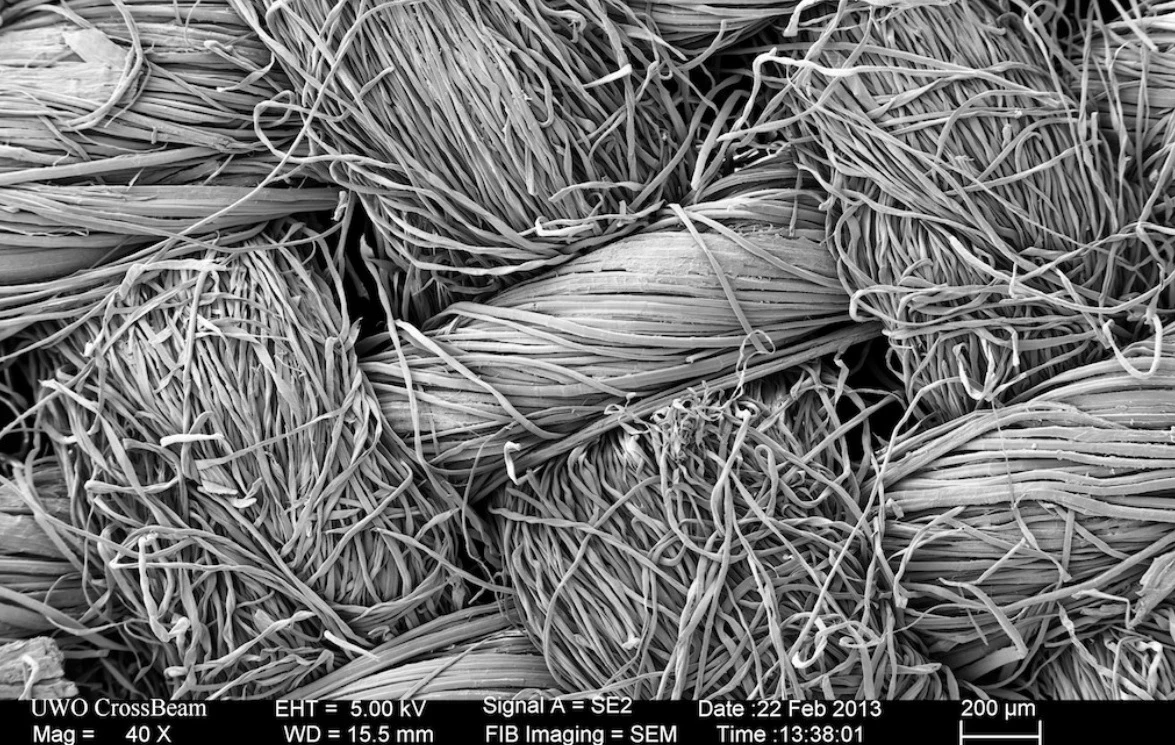ESA is working on ways to make sharing unwashed underwear used in spacesuits a bit less horrible. The Austrian Space Forum (OeWF) will work with the Vienna Textile Lab on the BACTeRMA project to test textiles with improved anti-bacterial properties for spacesuits used on long-duration space missions.
Space travel may seem glamorous, but it's not all boldly going and taking one small step. The unpleasant reality is that it isn't possible to leave behind all the basic necessities, like having to do the laundry.
Unfortunately, one of the things that space agencies don't like to talk about is that from Vostok 1 to today, astronauts have never had a way of cleaning their clothes. On the International Space Station (ISS), for example, where crew members live for months at a time, the personnel have to carry along enough clothes to (hopefully) last them until they return to Earth.

Though the astronauts rotate their garments on a daily basis, they get ripe enough that they have few qualms about letting their underwear et al burn up in the Earth's atmosphere in a returning uncrewed cargo ship. This is bad enough, but crew going on spacewalks not only have to deal with unwashed pieces of personal clothing, but ones that they have to share.
To be specific, the problem is the Liquid Cooling and Ventilation Garment (LCVG). This is worn with the NASA spacesuit called the External Mobility Unit (EMU), which was originally developed for the Space Shuttle program, and is now standard equipment on the space station.
The EMU is made up of several components in different sizes, which can be swapped around to fit individual astronauts. Underneath this, each astronaut is issued a disposable Maximum Absorbency Garment, which is a polite euphemism for an adult diaper, and a personal Thermal Comfort Undergarment to prevent chafing.

Unfortunately, a vital part of the spacesuit is the LCVG. This is worn over the undergarment and is a tight-fitting, loose-woven jumpsuit lined with plastic tubes to circulate water that is cooled or heated to keep the astronaut safe and comfortable. This garment is so efficient that it can easily handle 4,000 BTU/hr (1,000 kilocalories/hr), which is equivalent to the heat generated by a 180-lb (82-kg) man sawing down a tree in the tropics.
Like the EMU itself, the LCVG has been shared between spacewalking astronauts and can only be cleaned by returning it to Earth for an overhaul. On the ISS, this means the spacesuits can get a bit manky, but on longer missions operating on the planned Gateway deep-space outpost, this could rise to the level of a flat-out health hazard.
"Spaceflight textiles, especially when subject to biological contamination – for example, spacesuit underwear – may pose both engineering and medical risks during long duration flights," says ESA material engineer Malgorzata Holynska. "We are already investigating candidate materials for outer spacesuit layers, so this early technology development project is a useful complement, looking into small bacteria-killing molecules that may be useful for all kinds of spaceflight textiles, including spacesuit interiors."

The standard way of fighting bacteria in garments and other objects is to use materials like copper or silver, which can be effective, but they can also be toxic and tend to tarnish, reducing their effectiveness. As an alternative, the two-year BACTeRMA project is looking at secondary metabolites, which are produced by bacteria as an end product of metabolic processes, yet have antimicrobial, antiviral and antifungal properties.
The goal is to find effective metabolites and integrate them into suitable textiles. Because these textiles may be used in spacesuits on lunar surface missions, they will not only be subjected to perspiration in testing, but also simulated lunar dust. The textiles will then be subjected to radiation, which will simulate the effects of prolonged storage in deep space.
"Christopher Columbus needed shipbuilders to make his journey happen, and that’s the kind of contribution we in the OeWF hope to make," says Seda Özdemir-Fritz Bacterma, project scientist at the OeWF. "We’re interested in the human factors involved in future Moon Mars missions, so we perform ‘analogue astronaut’ simulations and analysis."
Source: ESA










